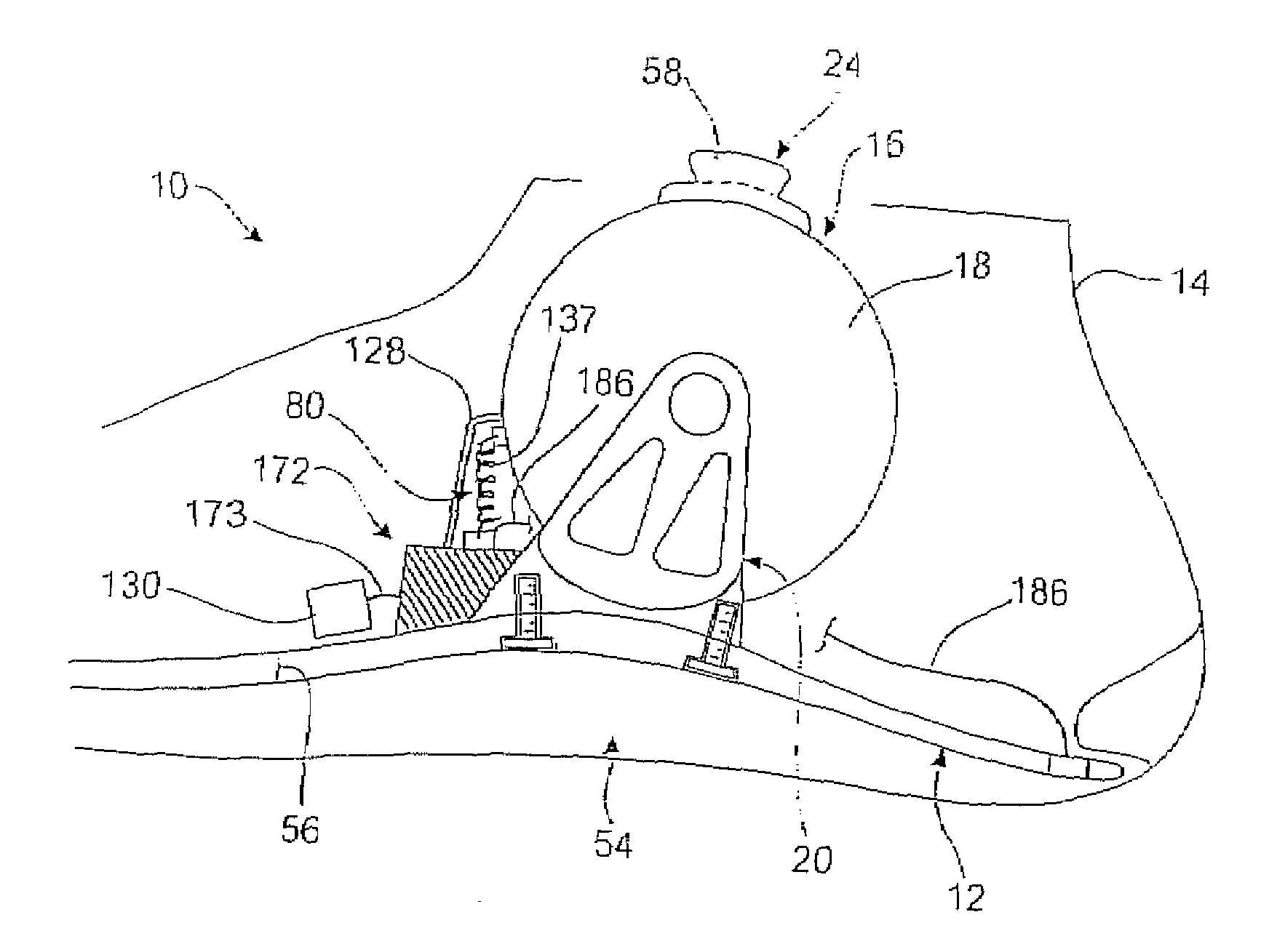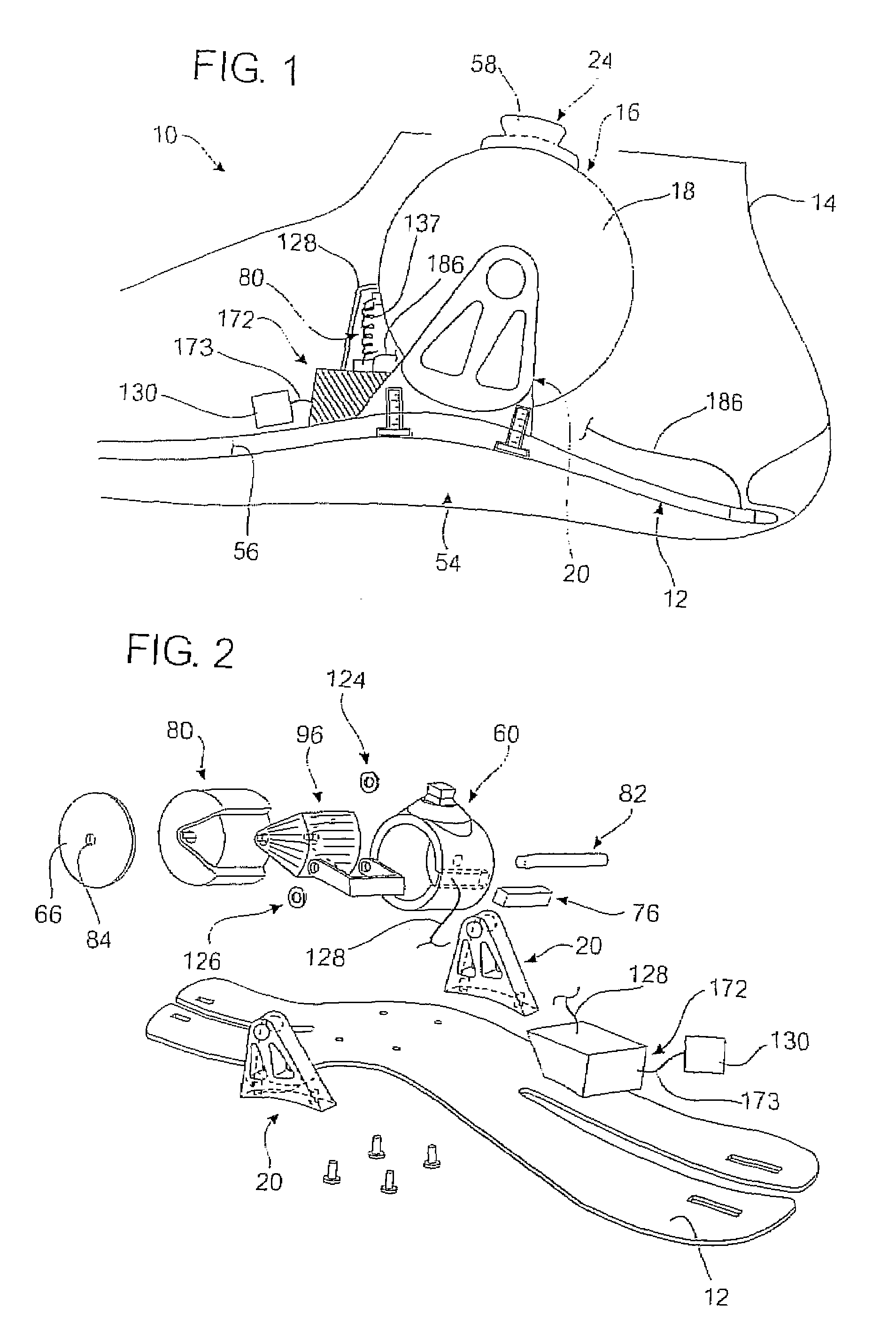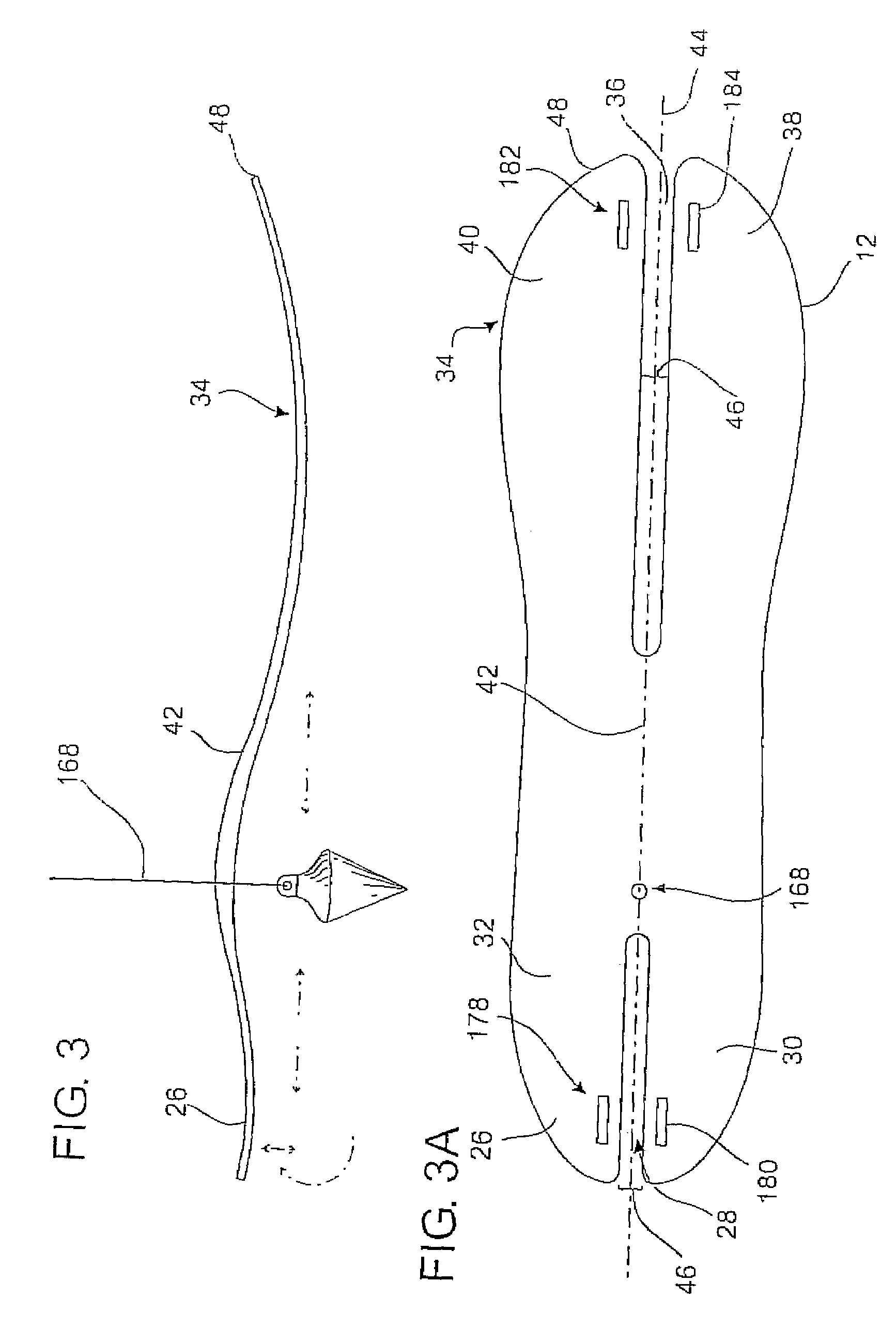Electronically controlled prosthetic system
a prosthetic system and electric control technology, applied in the field of ankle and foot joint system, can solve the problems of increasing the amount of force required to initiate or sustain movement in the damper, increasing cost and complexity, and increasing the reliance on the user's own muscle strength, so as to improve safety, optimize energy return, and facilitate uneven ground traversal
- Summary
- Abstract
- Description
- Claims
- Application Information
AI Technical Summary
Benefits of technology
Problems solved by technology
Method used
Image
Examples
Embodiment Construction
[0116]Referring now to the drawings, wherein like reference numerals designate corresponding structure throughout the views, and referring in particular to FIGS. 1 and 2, reference numeral 10 generally refers to a new and improved prosthetic foot with ankle system, hereinafter referred to as prosthetic foot collectively, in accordance with the present invention. Invention 10 generally comprises keel 12, foot shell 14, ankle joint assembly 16, dampening means or system 18, a bracket assembly 20, sensor system 22, and attachment means 24. It should not be considered limiting what order certain components are depicted in the attached drawings. For instance, attaching either the inner or outer cylinder to the keel should be considered to be within the scope of the same invention, and does not depart from the intended disclosure. It should be understood that there are a number of orientations that various components may be placed to provide a similar benefit to the end user.
[0117]Further...
PUM
 Login to View More
Login to View More Abstract
Description
Claims
Application Information
 Login to View More
Login to View More - R&D
- Intellectual Property
- Life Sciences
- Materials
- Tech Scout
- Unparalleled Data Quality
- Higher Quality Content
- 60% Fewer Hallucinations
Browse by: Latest US Patents, China's latest patents, Technical Efficacy Thesaurus, Application Domain, Technology Topic, Popular Technical Reports.
© 2025 PatSnap. All rights reserved.Legal|Privacy policy|Modern Slavery Act Transparency Statement|Sitemap|About US| Contact US: help@patsnap.com



